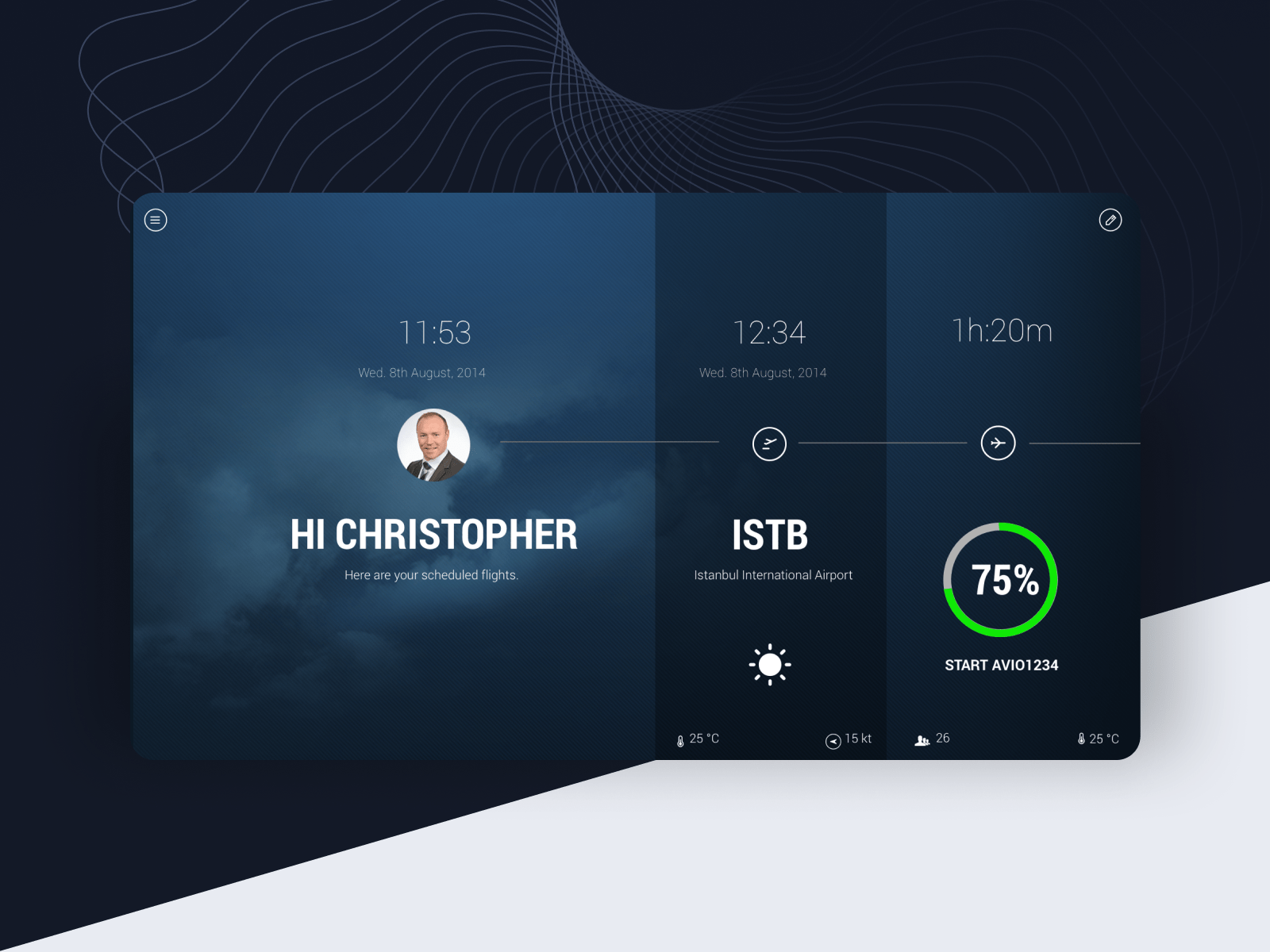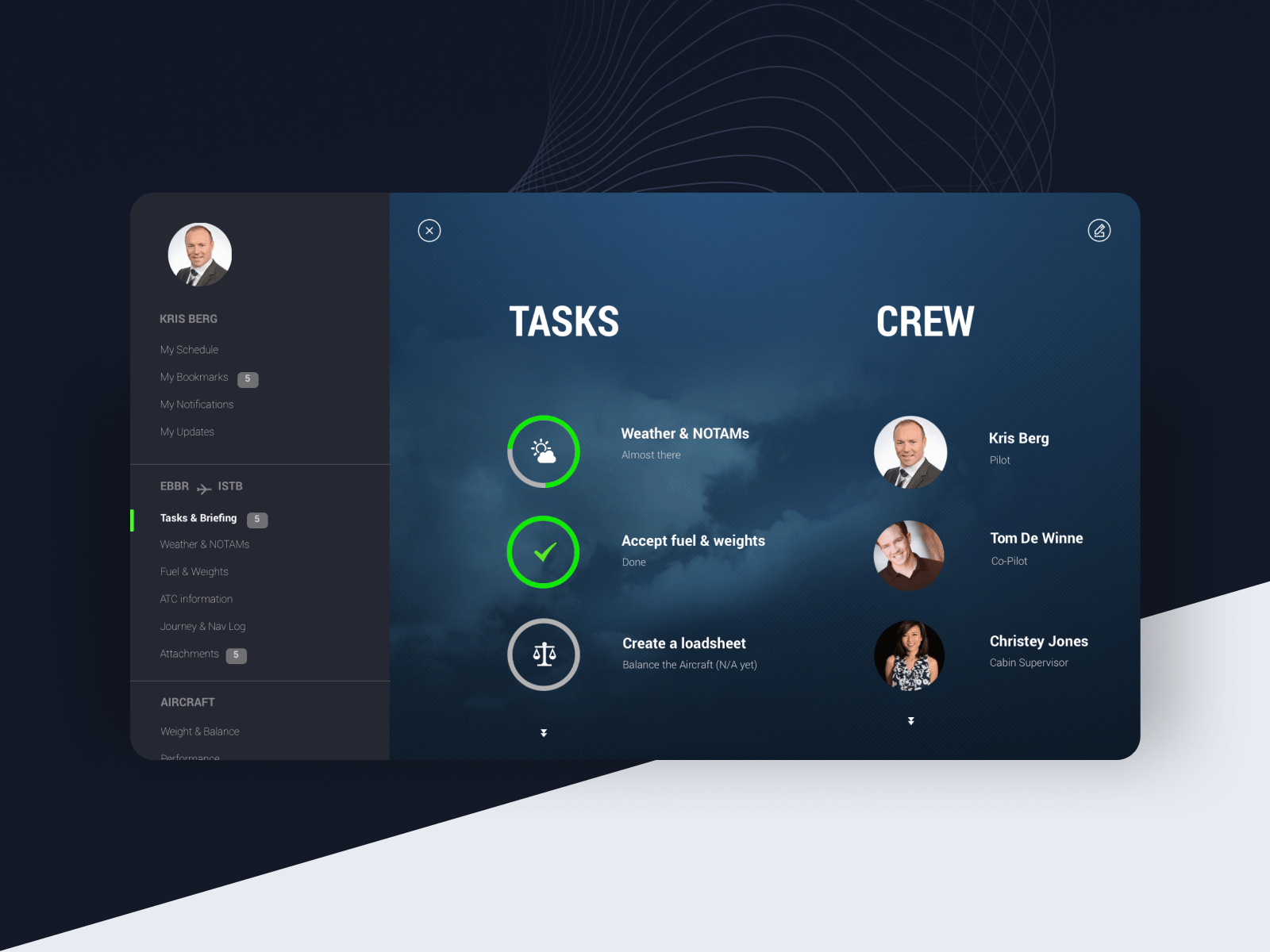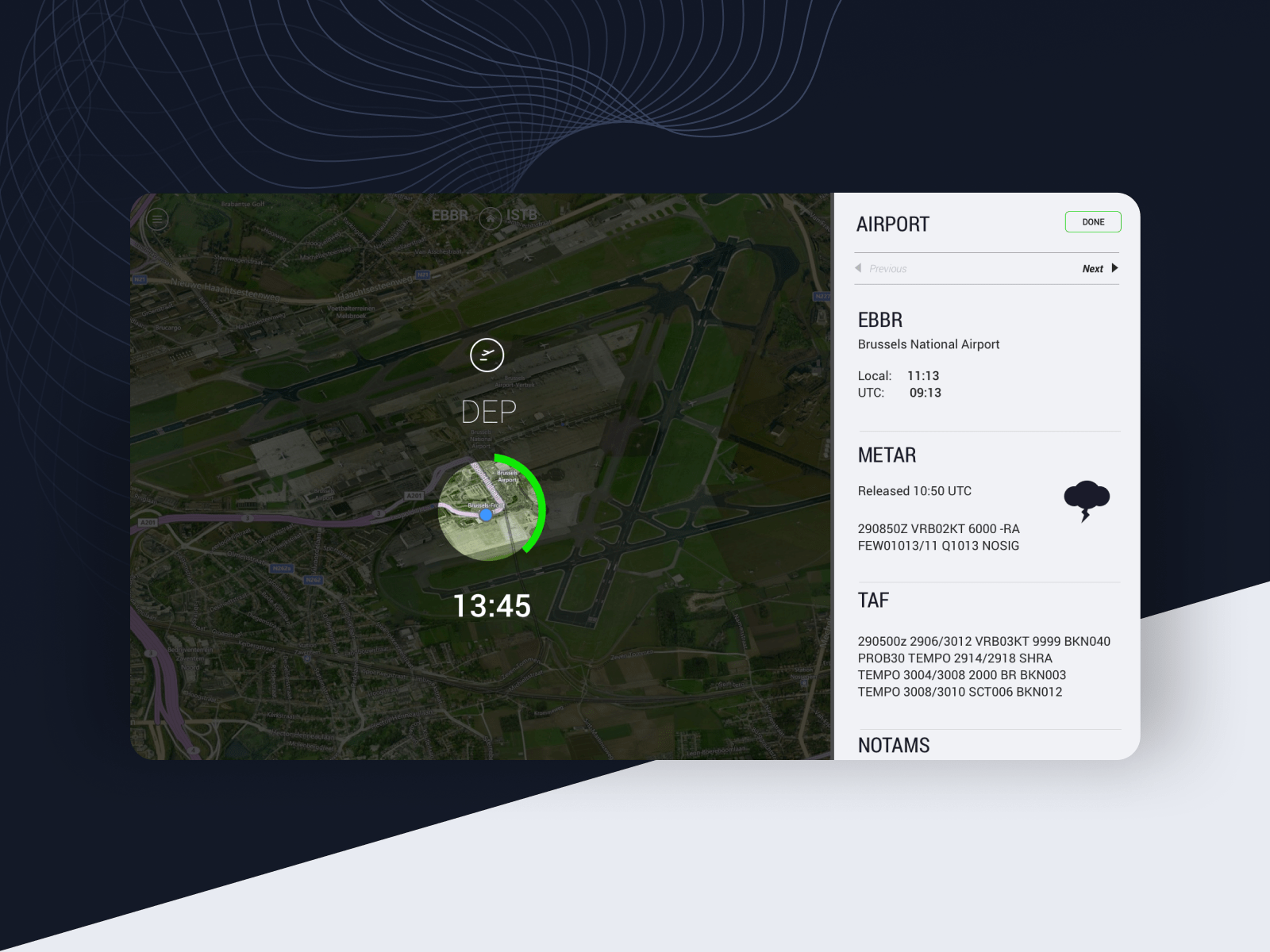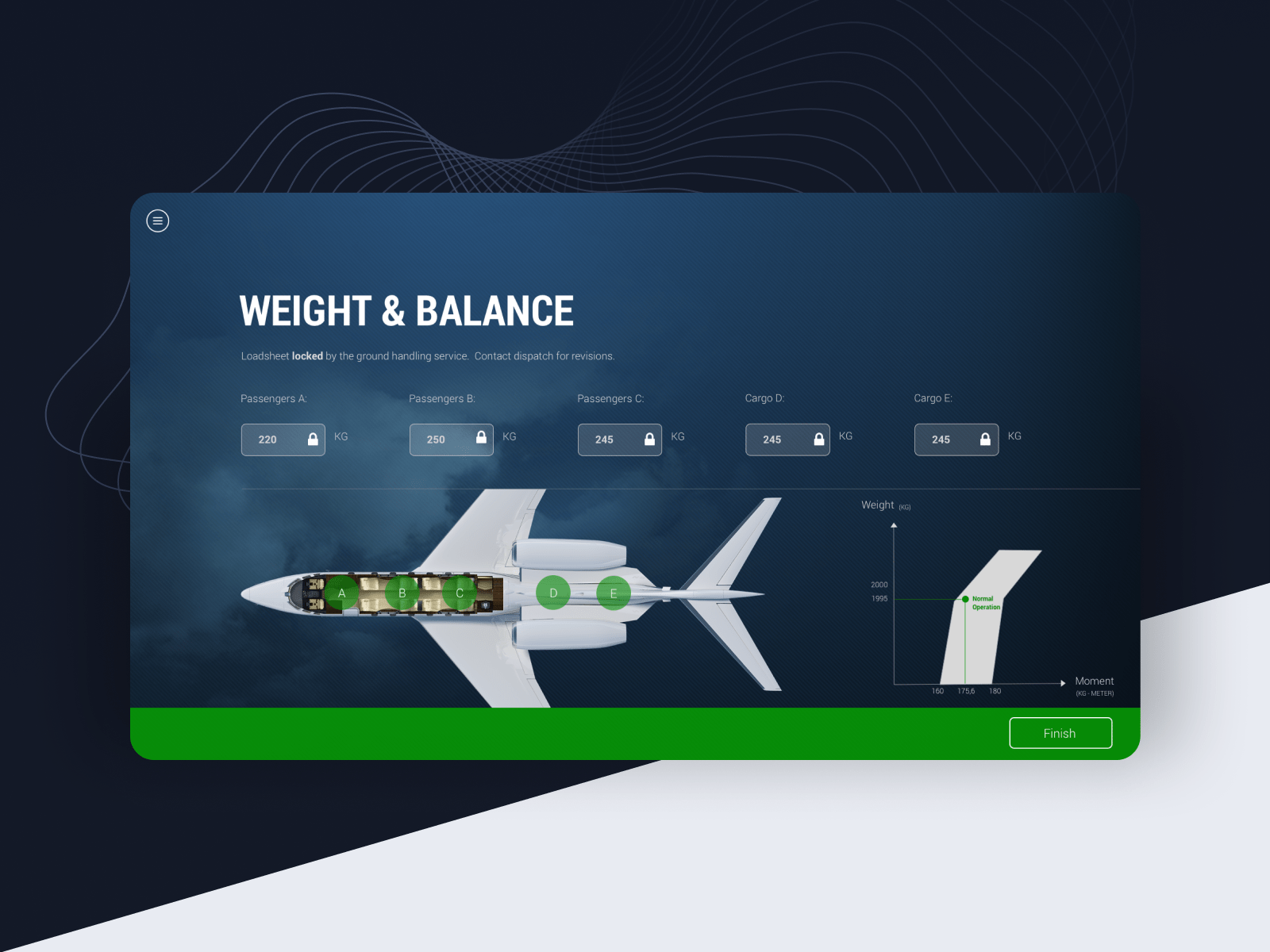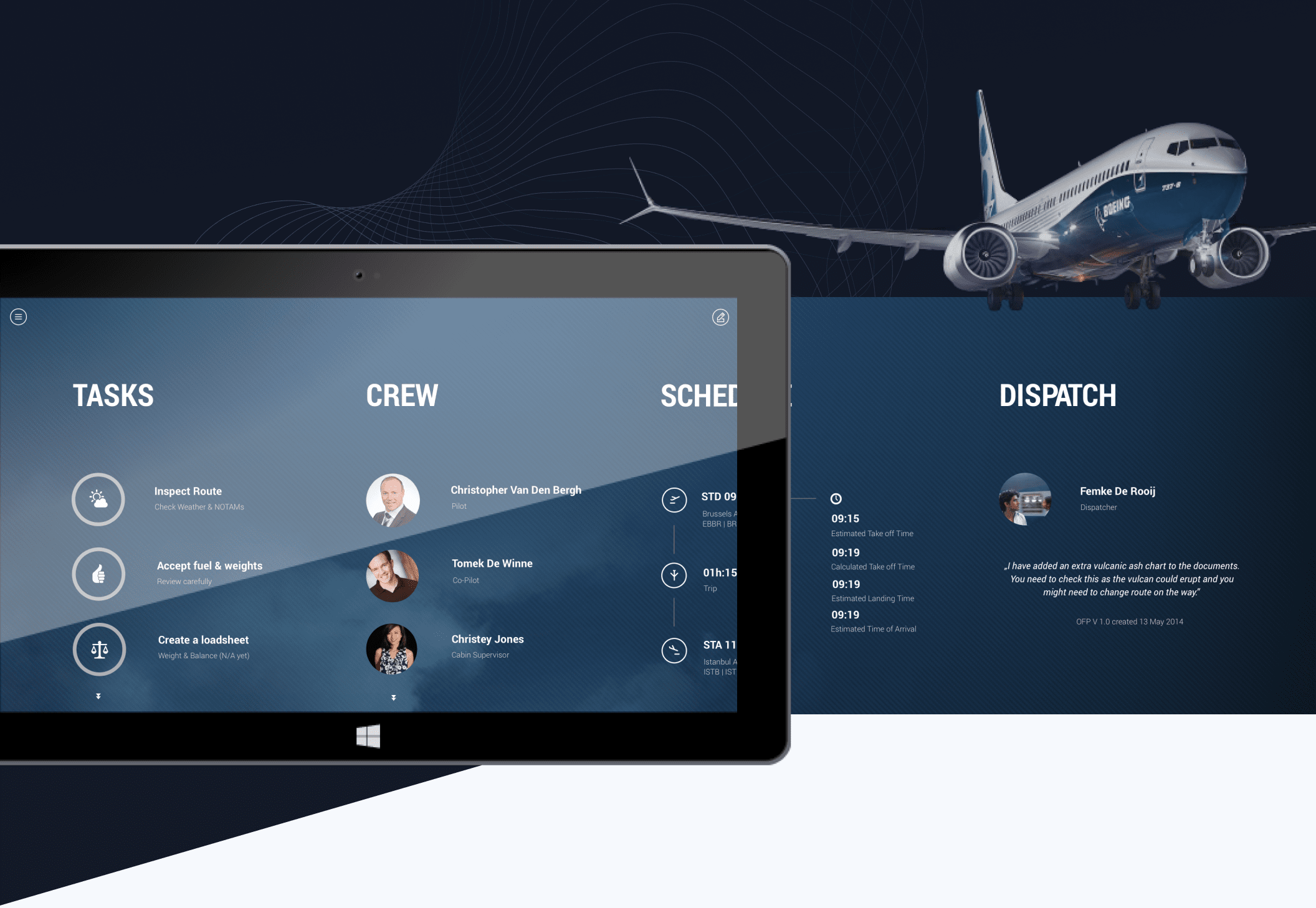

Aviobook is a software platform for pilots, dispatchers, cabin
crew and others involved in the day-to-day operation of flying.
Between 2010 and 2012 I’ve designed the
basics of Aviobook while employed at an agency
called Nascom.
Later in 2014 I joined the aviation startup full time as more
services and modules were being added.
Over time I
worked on various platform modules such as aircraft performance
calculations, fuel orders, global weather maps and digital flight
documentation.
In this case study we will focus on the
weight & balance + load planning for the
aircraft.
Aviobook is extremely robust, user friendly and one of the most comprehensive EFB suites in the market. The advanced user interface and the embedded workflow elements allow our flight crews to work more efficiently.

An aircraft that is not in balance might tip on its tail and cause great danger, damage and costs. Pilots need to carefully review how the holds are loaded.
Digitize the loading process and ensure a safe digital sign-off flow between loadmaster and captain before take-off.
Worked with 1 product manager, multiple pilots and engineers for 4 months 60% of my time on the module before it was ready to develop.
Currently over 60 airlines use the module in their live operations, and more than 25.000 flights each week are reviewed with Aviobook.
Passengers check in overweight bags, strollers and other items last
minute which weren’t accounted for while booking the ticket. All
this information and extra weight has to be processed and
communicated to ensure a safe flight.
To learn more
about the process of loading an aircraft, I traveled to Norway where
loading an aircraft is a form of art.
When people live on islands – like in Norway – they
heavily depend on the supply of goods from the mainland. Last minute
free seats on the aircraft are often put to good use by loading up a
few extra crates of soda for the local supermarket.
However,
all cargo is planned and logged as flying with a small aircraft in
sometimes challenging Scandinavian weather can turn out to be
difficult.
The flow of information between various persona’s didn’t require
the use of new devices as first assumed.
A new
web-based module for Aviobook Base combined with a module in the
Aviobook Flight app was scoped as the MVP.

With acquired insights from the field study, I could create a
detailed process map and visualize required tasks
& communication.
This served as my mental map to
start on the new page models and
information architecture for the load management
system.
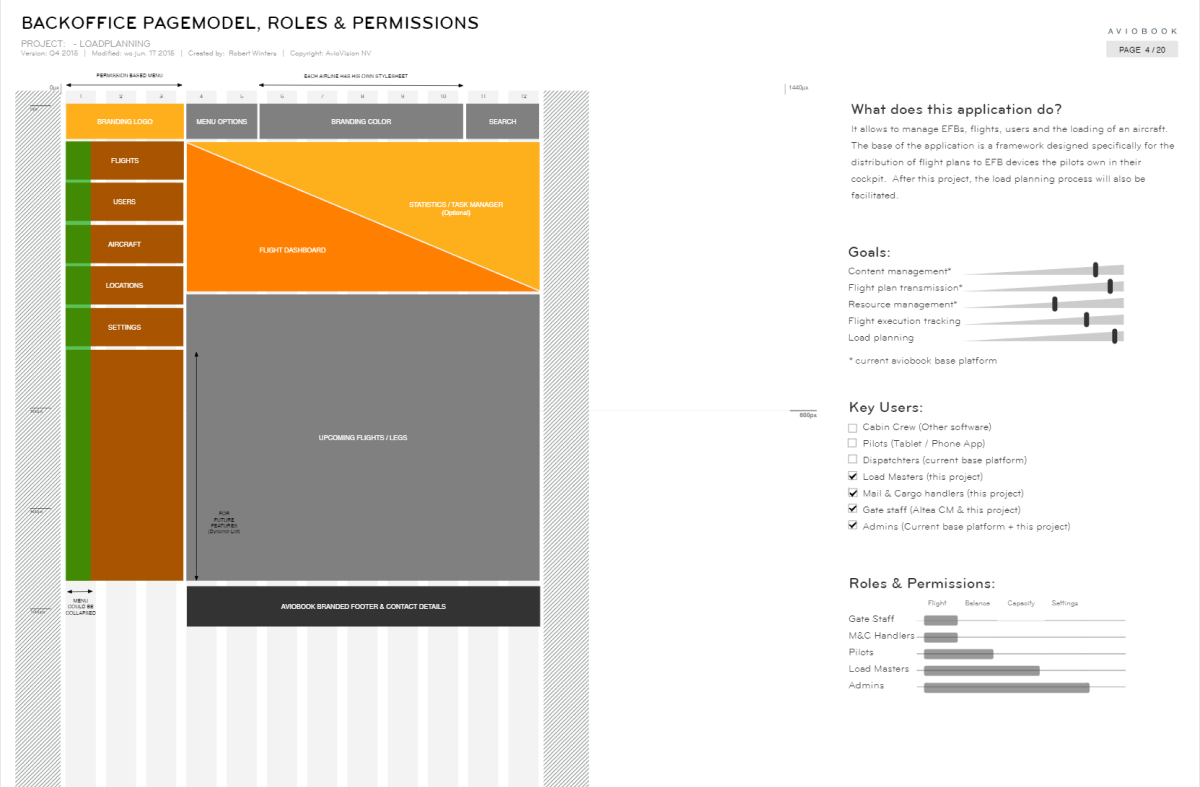

After exploring flows, epic user stories and structure, I double
checked them with all stakeholders to make sure I understood
everything correctly and didn't make any mistakes.
Based on everything I learned, I created a
functional document signed off & validated by
various airlines, outlining all the features and screens needed.
The proposal was integrated in the wider Aviobook Base
platform. The visual design was inherited from Aviobook Base and
its design system.
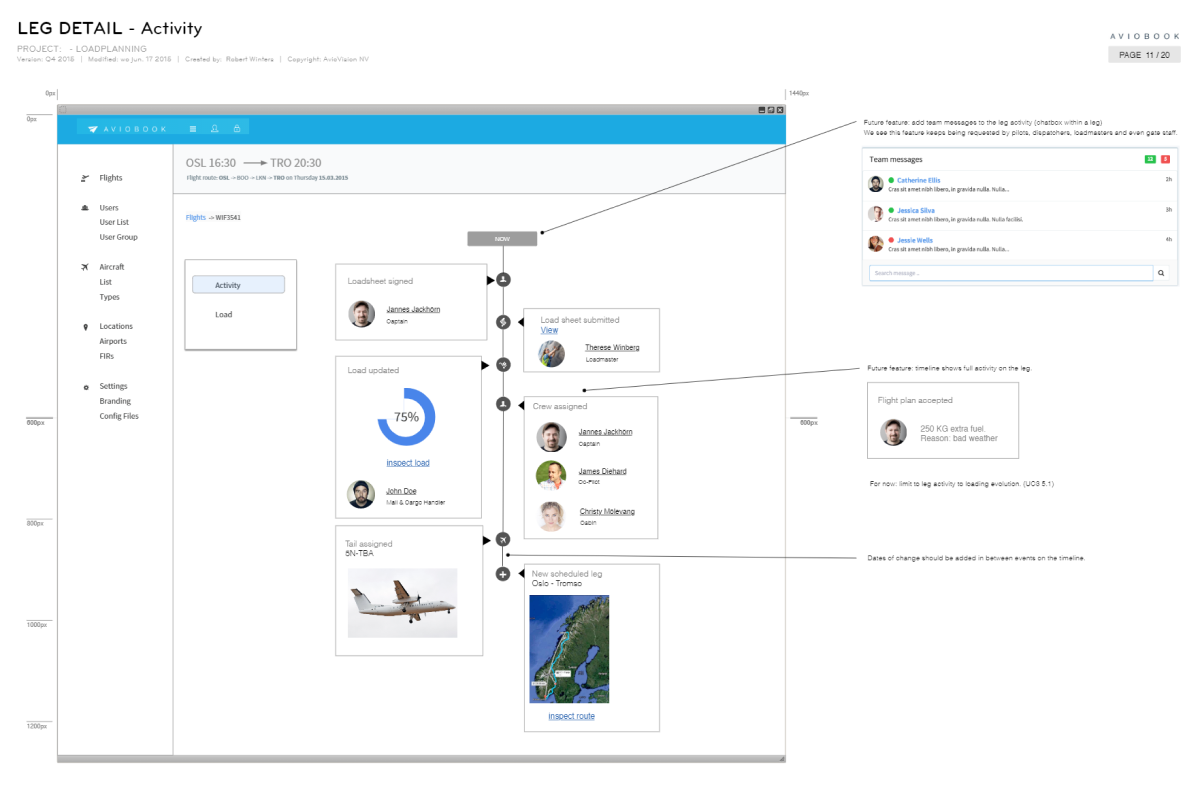

At the time Aviobook had a partnership with Microsoft to promote
its Windows 8 platform in the aviation vertical.
For
this partnership I delivered a redesign of the pilot app,
including the loadplanning’s
weight & balance module based on the
Metro design language.
I worked
closely with a Polish development team on the first version remote
and traveled to Poland frequently to oversee key
milestones deliveries in the development.

